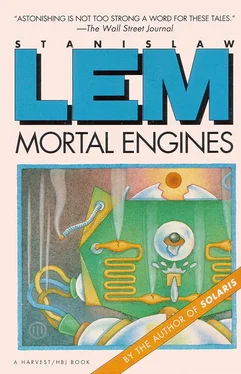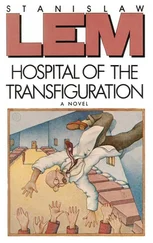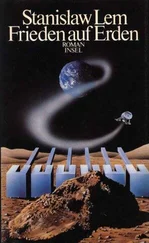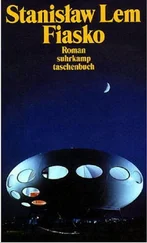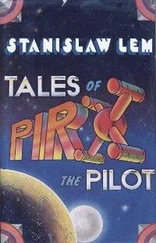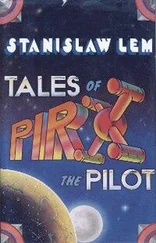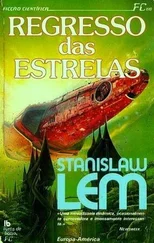Stanislaw Lem - Mortal Engines
Здесь есть возможность читать онлайн «Stanislaw Lem - Mortal Engines» весь текст электронной книги совершенно бесплатно (целиком полную версию без сокращений). В некоторых случаях можно слушать аудио, скачать через торрент в формате fb2 и присутствует краткое содержание. Город: London, Год выпуска: 1992, ISBN: 1992, Издательство: André Deutsch, Жанр: Фантастика и фэнтези, на английском языке. Описание произведения, (предисловие) а так же отзывы посетителей доступны на портале библиотеки ЛибКат.
- Название:Mortal Engines
- Автор:
- Издательство:André Deutsch
- Жанр:
- Год:1992
- Город:London
- ISBN:0-233-98819-X
- Рейтинг книги:3 / 5. Голосов: 1
-
Избранное:Добавить в избранное
- Отзывы:
-
Ваша оценка:
- 60
- 1
- 2
- 3
- 4
- 5
Mortal Engines: краткое содержание, описание и аннотация
Предлагаем к чтению аннотацию, описание, краткое содержание или предисловие (зависит от того, что написал сам автор книги «Mortal Engines»). Если вы не нашли необходимую информацию о книге — напишите в комментариях, мы постараемся отыскать её.
“Astonishing is not too strong a word for these tales”
(Wall Street Journal).
Mortal Engines — читать онлайн бесплатно полную книгу (весь текст) целиком
Ниже представлен текст книги, разбитый по страницам. Система сохранения места последней прочитанной страницы, позволяет с удобством читать онлайн бесплатно книгу «Mortal Engines», без необходимости каждый раз заново искать на чём Вы остановились. Поставьте закладку, и сможете в любой момент перейти на страницу, на которой закончили чтение.
Интервал:
Закладка:
Since early morning the lunar fleet, numbering twelve small units, had patrolled the Sea of Tranquillity and sent continual reports to the group defending the construction site, which in turn was in constant contact with Headquarters at the cosmodrome. It was no easy thing to detect the Setaur, a tiny piece of metal in a giant wilderness of rock filled with fields of detritus, cracks and half-buried crevices, and covered besides with the pockmarks of miniature craters. If only those reports had been at least negative! But the patrolling crews had alarmed ground personnel several times already with the information that the “mad machine” was sighted, after which it turned out that the object was some unusual rock formation or a fragment of lava sparkling in the rays of the sun; even the use of radar along with ferroinduction sensors proved to be of little help—in the wake of the first stages of lunar exploration and colonization there remained upon the Moon’s rocky wastes a whole multitude of metal containers, heat-fused shells from rocket cartridges and all possible sorts of tin junk, which every now and then became the source of fresh alarms. So much so, that operation headquarters began to wish the Setaur would finally attack something and show itself. However the last time it had revealed its presence was with the attack on the small transporter belonging to the electrical repair team. Since then it seemed as if the lunar soil had opened up and swallowed the thing. But everyone felt that sitting and waiting was out of the question, particularly when Construction had to regain its energy supply. The action—covering about ten thousand square kilometers—consisted in combing that area with two waves of vehicles approaching each other from opposite directions, that is, from the north and from the south. From Construction came one extended line under the command of their head technologist Strzibor, and from the Luna cosmodrome—the second, in which the role of operations coordinator of both sides, working closely with the Chief (Commodore Navigator Pleydar), fell to Pirx. He understood perfectly that at any moment they could pass right by the Setaur; it might for example be hidden in one of those deep tectonic trenches, or even be camouflaged by only the dazzling lunar sand, and they would never notice it; McCork, who rode with him as “intellectronist-consultant,” was of the same opinion.
The transporter lurched dreadfully, moving along at a speed which, as the driver quietly informed them, “after a while makes your eyes pop out.” They were now in the eastern sector of the Sea of Tranquillity and less than an hour away from the region where the automaton was most likely to be located. After crossing that previously determined border they were all to don their helmets, so that in case of an unexpected hit and loss of seal, or fire, they could leave the vehicle immediately.
The transporter had been changed into a fighting machine; the mechanics had mounted on its domelike turret a mining laser of great power, though pretty poor as far as accuracy went. Pirx considered it altogether useless against the Setaur. The Setaur possessed an automatic sighter, since its photoelectric eyes were hooked up directly to the laser and it could instantly fire at whatever lay in the center of its field of vision. Theirs, on the other hand, was a quaint sort of sighter, probably from an old cosmonautical range finder; it had been tested in this way, namely, that before leaving Luna they took a few shots at some rocks on the horizon. The rocks had been large, the distance no greater than a mile, and even so they hit the mark only on the fourth try. And here, to make matters worse, you had lunar conditions to cope with, because a laser ray was visible as a brilliant streak only in a diffusing medium, e.g. an earthlike atmosphere; but in empty space a beam of light, regardless how powerful, was invisible until it hit some material obstacle. Therefore on Earth you could shoot a laser much the way you shot tracer bullets, being guided by their observable line of flight. Without a sighter a laser on the Moon was of no practical value. Pirx didn’t keep this from McCork; he told him when only a couple of minutes separated them from the hypothetical danger zone.
“I didn’t think of that,” said the engineer, then added with a smile:
“Why did you tell me?”
“To free you of illusions,” replied Pirx, not looking up from the double eyepiece of his periscope. It had foam-rubber cushions, but he felt sure that he would be going around with black eyes for the longest time (assuming, of course, he came out of this alive). “And also, to explain why we’re carrying that stuff in the back.”
“The cylinders?” asked McCork. “I saw you taking them from the storeroom. What’s in them?”
“Ammonia, chlorine and some hydrocarbons or other,” said Pirx. “I thought they might come in handy…”
“A gas-smoke screen?” ventured the engineer.
“No, what I had in mind was some way of aiming. If there’s no atmosphere, we create one, at least temporarily…”
“I’m afraid there won’t be time for that.”
“Perhaps not… I took it along just in case. Against one that is insane, insane measures are often best…”
They fell silent, for the transporter had begun to lurch like a drunk; the stabilizers whined and squealed, sounding as if any minute the oil in them would begin to boil. They hurtled down an incline strewn with sharp boulders. The opposite slope gleamed, all white with pumice.
“You know what worries me most?” resumed Pirx when the heaving let up a little; for he had grown strangely talkative. “Not the Setaur—not at all… It’s those transporters from Construction. If just one of them takes us for the Setaur and starts blasting away with its laser, things’ll get lively.”
“I see you’ve thought of everything,” muttered the engineer. The cadet, sitting beside the radio operator, leaned across the back of his seat and handed Pirx a scrawled radiogram, barely legible.
“We have entered the danger zone at relay twenty, so far nothing, stop, Strzibor, end of transmission,” Pirx read aloud. “Well, we’ll soon have to put our helmets on too…”
The machine slowed a little, climbing a slope. Pirx noticed that he could no longer see the neighbor on his left—only the right transporter was moving like a dim blot up the bank. He ordered the left machine to be raised by radio, but there was no answer.
“We have begun to separate,” he said calmly. “I thought that would happen. Can’t we push the antenna up a little higher? No? Too bad.”
By now they were at the summit of a gentle rise. From over the horizon, at a distance of less than two hundred kilometers, emerged, full in the sun, the sawtooth ridge of the crater Toricelli, sharply outlined against the black background of the sky. They had the plain of the Sea of Tranquillity all but behind them now. Deep tectonic rifts appeared, frozen slabs of magma jutted here and there from under the debris, and over these the transporter crawled with difficulty, heaving up first like a boat on a wave, then dropping heavily down, as though it were about to plunge head over heels into some unknown cavity. Pirx caught sight of the mast of the next relay, glanced quickly at the celluloid map card pressed to his knees, and ordered everyone to fasten their helmets. From now on they would be able to communicate only by inside telephone. The transporter managed to shake even more violently than before—Pirx’s head wobbled around in its helmet like the kernel of a nut inside an empty shell.
When they drove down the slope to lower ground, the saw of Toricelli disappeared, blocked out by nearer elevations; almost at the same time they lost their right neighbor. For a few minutes more they heard its call signal, then that was distorted by the waves bouncing off the sheets of rock, and complete radio silence followed. It was extremely awkward trying to look through the periscope with a helmet on; Pirx thought he would either crack his viewplate or smash the eyepiece. He did what he could to keep his eyes on the field of vision at all times, though it shifted totally with each lurch of the machine and was strewn with endless boulders. The jumble of pitch-black shadow and dazzlingly bright surfaces of stone made his eyes swim. Suddenly a small orange flame leaped up in the darkness of the far sky, flickered, dwindled, disappeared. A second flash, a little stronger. Pirx shouted: “Attention everyone! I see explosions!”—and feverishly turned the crank of the periscope, reading the azimuth off the scale etched onto the lenses.
Читать дальшеИнтервал:
Закладка:
Похожие книги на «Mortal Engines»
Представляем Вашему вниманию похожие книги на «Mortal Engines» списком для выбора. Мы отобрали схожую по названию и смыслу литературу в надежде предоставить читателям больше вариантов отыскать новые, интересные, ещё непрочитанные произведения.
Обсуждение, отзывы о книге «Mortal Engines» и просто собственные мнения читателей. Оставьте ваши комментарии, напишите, что Вы думаете о произведении, его смысле или главных героях. Укажите что конкретно понравилось, а что нет, и почему Вы так считаете.
